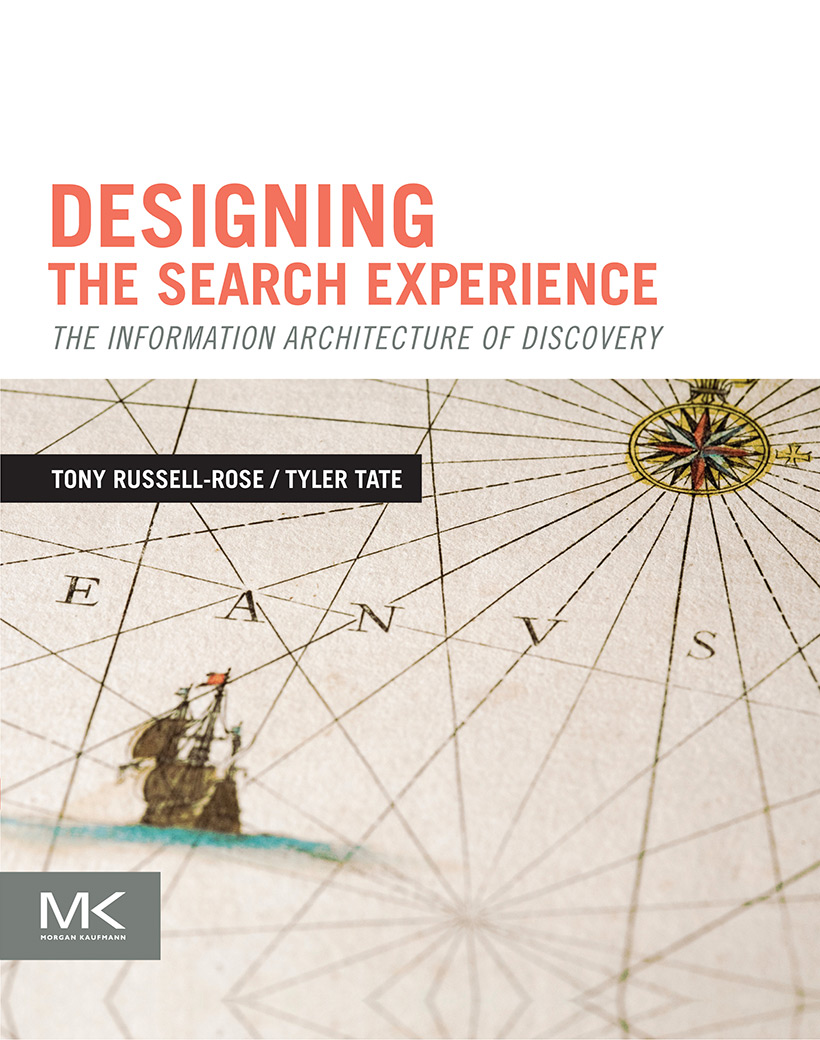 OK, I know it’s a bit of a provocative (and frivolous) title, but it was either that or “Anti-patterns for Search”, which is somewhat less transparent… Anyway, the point is that although this site focuses on sharing best practices for search usability and user-centred design in general, we sometimes learn more by studying examples of the opposite, i.e. poor practice. The thing about UX design is that when executed well it fades into the background, letting us get on with the task at hand and not worry about the machinery of the interaction. It isn’t until we encounter flawed design that we are jolted out of our flow and forced to make choices that don’t seem to fit with either our expectations or the natural course of our activity.
OK, I know it’s a bit of a provocative (and frivolous) title, but it was either that or “Anti-patterns for Search”, which is somewhat less transparent… Anyway, the point is that although this site focuses on sharing best practices for search usability and user-centred design in general, we sometimes learn more by studying examples of the opposite, i.e. poor practice. The thing about UX design is that when executed well it fades into the background, letting us get on with the task at hand and not worry about the machinery of the interaction. It isn’t until we encounter flawed design that we are jolted out of our flow and forced to make choices that don’t seem to fit with either our expectations or the natural course of our activity.
Posts Tagged ‘usability’
Search that sucks
Posted in Search, User experience, tagged Anti-pattern, Design Patterns, Information Discovery, Information Retrieval, interaction design, usability, User-centered design on April 16, 2013| 11 Comments »
Search Usability: Filters and Facets
Posted in Information architecture, Search, User experience, tagged Design Patterns, Facets, Human–computer interaction, interaction design, usability, User experience, user-centred design on September 4, 2012| Leave a Comment »

Just a quick heads up that on October 18 I’ll be presenting a tutorial at CILIP in London on Search Usability: Filters and Facets. This is a new course offered as part of the UKeiG’s training programme (so new in fact I haven’t completed it yet 🙂 It builds on my existing Designing the Search Experience course, extending it to include deeper coverage of key topics and a variety of new practicals and group exercises. (It’s also very competitively priced from just £160 per person – contrast that with a rate of ~£500+ per day for this comparable corporate offering!)
For further details and registration, see the UKeIG website. In the meantime, I’ve appended further details below.
Hope to see you there!
Course Outline:
Is search behaviour becoming more sophisticated?
Posted in Search, Text analytics, User experience, tagged HCI, natural language processing, NLP, Text analytics, UCD, usability on February 12, 2011| 4 Comments »
A few folks have pointed out that my recent post on “Changing terms for changing times Usability, HCI, UCD & more” (which examined how the usage of these terms has changed across several decades of publications in Google Books) omitted a consideration of the “demand side” and the frequency of these terms in the Google index. With that in mind, I just updated the original article. If you just want to see the additional material alone, then read on.
Now let’s try a different analysis. If Google Books represents the “supply” side, i.e. content creation, what is the corresponding picture from the “demand” side, i.e. the content consumption? For this we can use Google Trends, which allows us to see how often certain topics have been searched for on Google over time (and also how frequently these topics have appeared in Google News stories). Applying the same query to Google Trends produces the following result, with the y-axis showing the average worldwide traffic for all five terms normalised by the dominant term (usability), and the x-axis showing the time period for which data is available. Note that Google Trends flattens its queries to lower case, thus eliminating one of the noise sources mentioned above. But it clearly cannot differentiate between the different senses for each of the acronyms, and for that reason in this analysis I chose to express the queries in their full British English form:
Clearly, usability remains the dominant term throughout, followed by information architecture and human computer interaction. I don’t think we can conclude much more than that without being able to magnify the scale and properly address the noise issues outlined above.
However, there are two other interesting patterns in these results. First, notice that all queries appear to be declining monotonically throughout the time period. Why is this? I think the answer may lie in the interpretation of the y axis: note that this value is actually the proportion of queries, not their absolute value. So this may reflect a gradual sophistication of user search behaviour on the web, in that queries are becoming ever more diverse as new terms are introduced and average query length increases. This is no doubt facilitated by novel UI features such as Google Instant, which faciliate the expression of longer queries. In other words, although usage of each of the queries above may be growing in absolute terms, they are nonetheless decreasing as proportion of overall web traffic. Unless Google Trends discloses absolute values for search terms, we can never know for sure.
But the more interesting pattern is the spikes in the distribution of the term usability that seem to appear midway through the final quarter of each year. What is causing these? My own hypothesis was that this could be related to World Usability Day, which since 2005 has occurred annually on the second Thursday in November. Indeed, a closer examination of the trends for each individual year does indicate a strong correlation, which appears to be borne out by the topics covered in the news stories associated with each spike. If so, it is reassuring to know that initiatives such as this do indeed appear to be having a global effect(!)
As a final datum, we should of course consider how frequently the various terms appear in the Google index itself (i.e. across the Internet). Would the patterns from Google Books be reflected across the web in general? Querying Google with each term in turn returns the following results (in descending order):
- “usability” About 21,100,000 results
- “human computer interaction” About 2,180,000 results
- “information architecture” About 1,850,000 results
- “user centred design” About 131,000 results
- “human centred design” About 61,800 results
So what can we conclude from the above? My own feeling is that it was a worthwhile exercise considering these additional terms, for the sake of completeness if nothing else. And the observations about sophistication of user search behaviour and the spikes due to promotional events such as World Usability Day are also interesting.
For further conclusions and the complete analysis, see the original article.
Related Posts:



